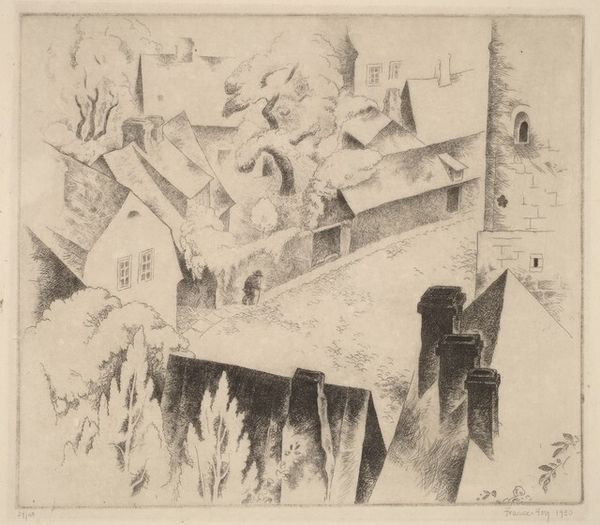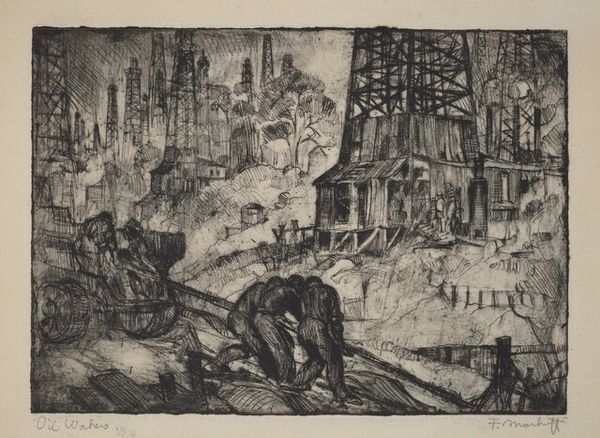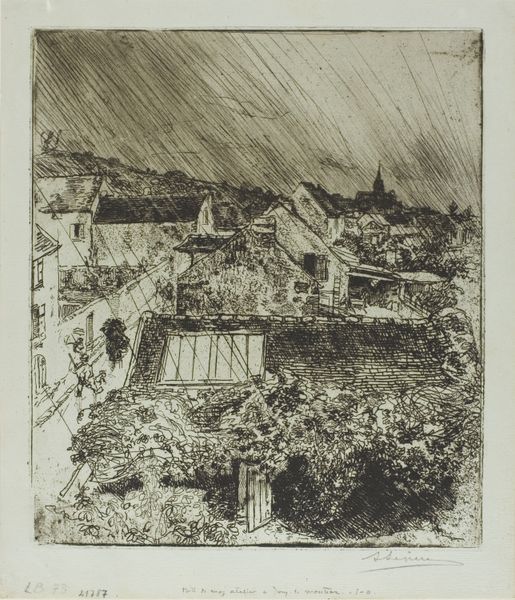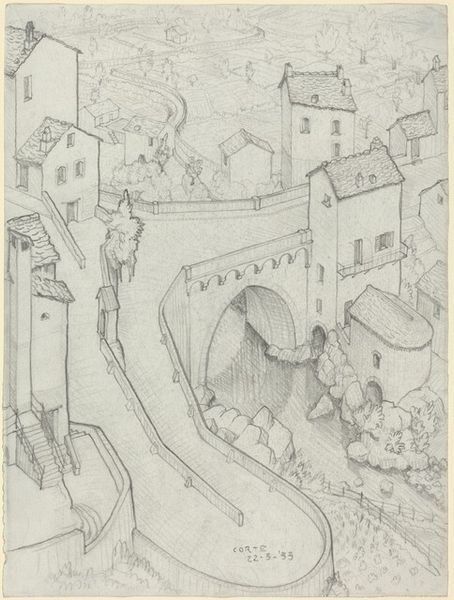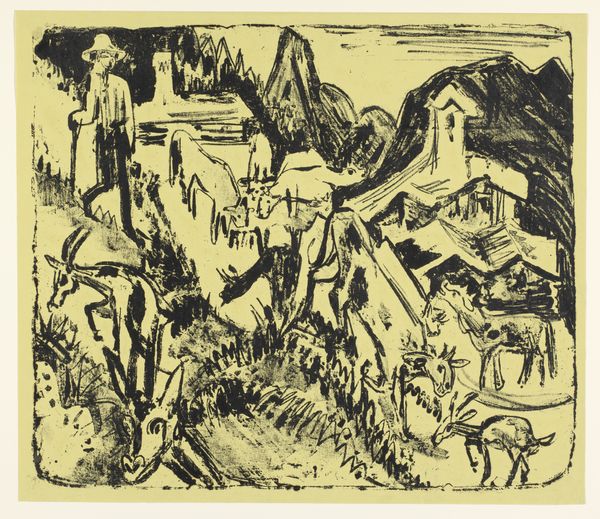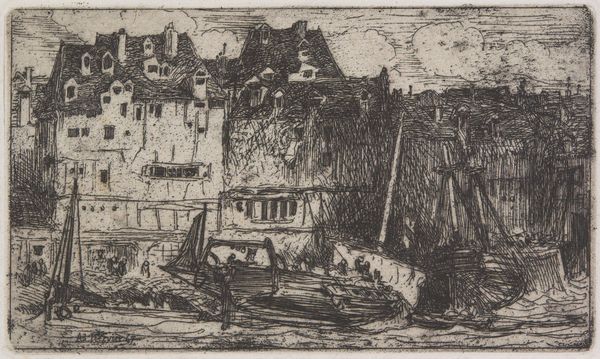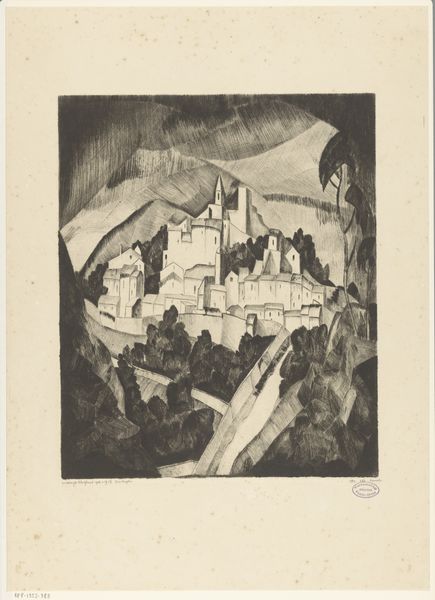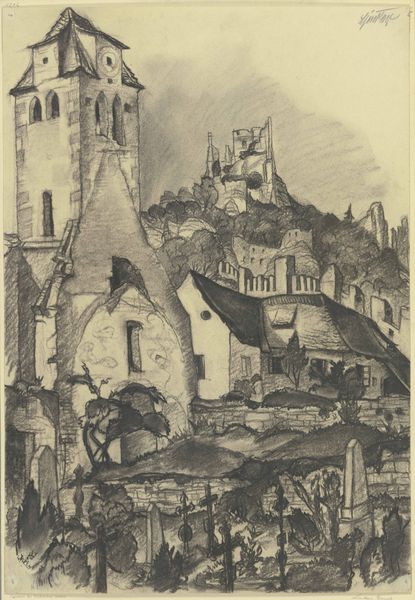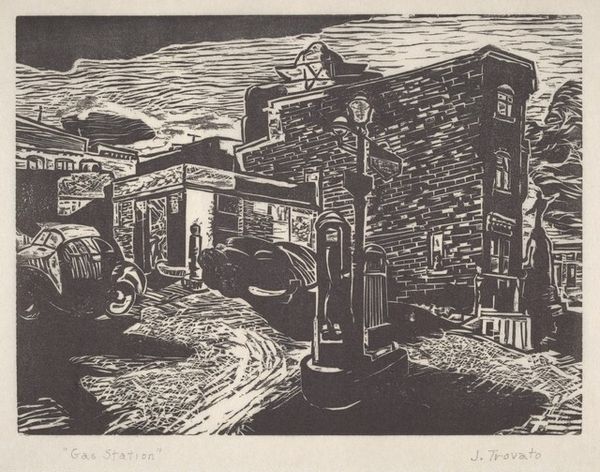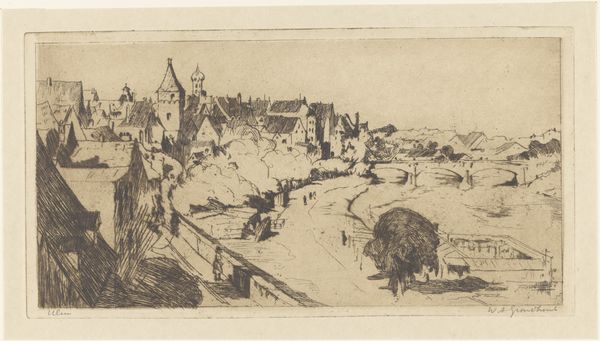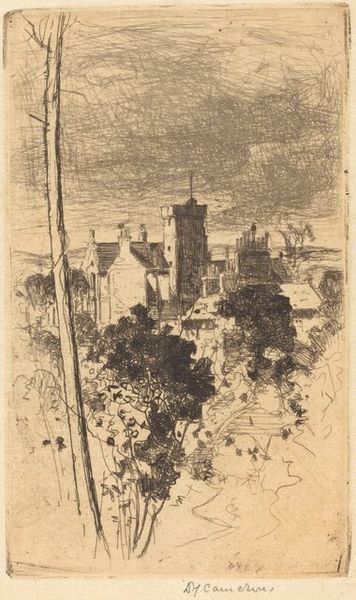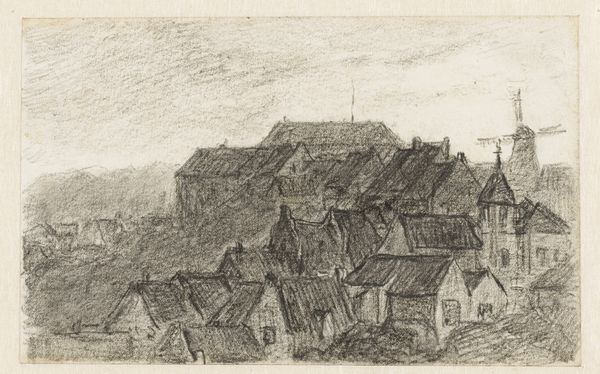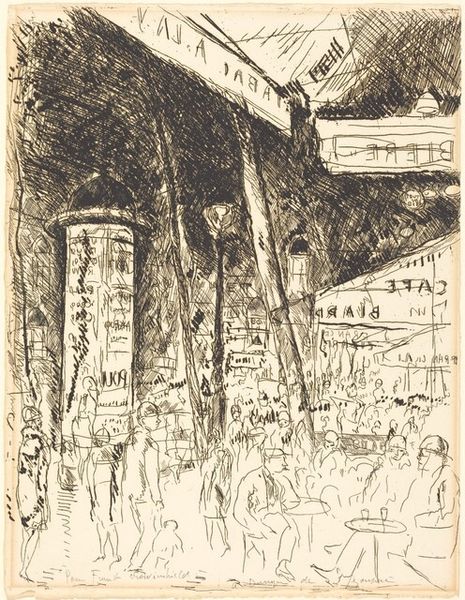
Dimensions: image: 220 x 162 mm sheet: 298 x 217 mm
Copyright: National Gallery of Art: CC0 1.0
Editor: Here we have Gertrude Partington Albright’s 1916 etching, "Strawberry Hill, San Francisco." The density of the linework creates such a palpable sense of the city rising up a hill. What do you see in this print? Curator: Well, I am drawn to the materials themselves and how they speak to the socio-economic context of the time. Etchings, and prints generally, democratized art. It made art accessible for consumption. We must ask, who was the intended audience and what was Albright saying through this mass-producible image? The labor invested into the etching process—the physical act of drawing, acid-etching, inking, and printing—allowed for widespread dissemination, quite unlike a unique painting for the wealthy elite. Editor: That's interesting! I hadn't thought about the role of printmaking in democratizing art. But how does the image itself fit into this idea of labor and social context? Curator: The very subject matter, Strawberry Hill, offers clues. Albright wasn’t painting a grand mansion, she was documenting a working-class neighborhood, possibly even one undergoing industrial development. How does Albright negotiate this tension between “high art” and a rather ordinary subject? By choosing etching, a traditionally craft-based process, she elevated this slice of San Francisco, drawing attention to its materiality and, arguably, the lives lived there. Think about the physicality of the roofs rendered in precise lines… they signify shelter, industry, and community. How might that resonate with its consumers? Editor: So you're saying the print itself, as an object of production and consumption, reinforces the image's depiction of a working neighborhood? Curator: Precisely. Albright's choice of medium is inextricably linked to her social commentary. The print challenges traditional art boundaries through material agency, by bringing visibility and making accessible something of everyday life in 1916 San Francisco. Editor: I hadn't considered the connection between the materials, the labor involved, and the social implications. It's really changed how I see this piece. Thank you. Curator: A pleasure. Seeing the whole process adds depth and insight to viewing any art piece.
Comments
No comments
Be the first to comment and join the conversation on the ultimate creative platform.
